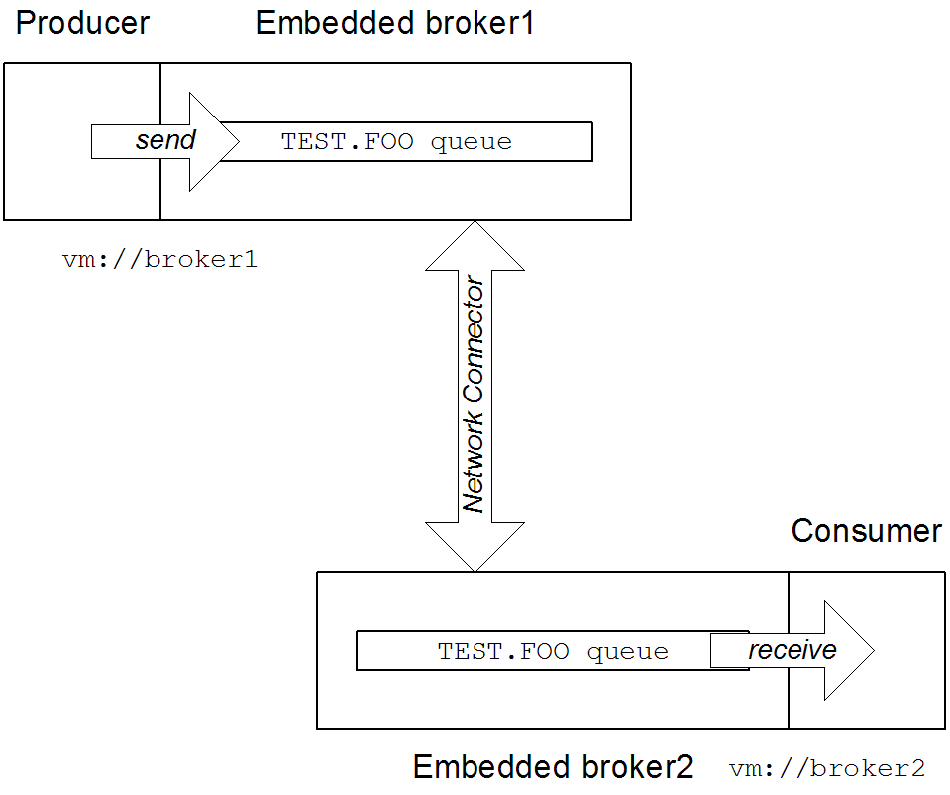The peer protocol enables you to set up a peer-to-peer network by creating an embedded broker inside each peer endpoint. Figure 6.1 illustrates the peer-to-peer network topology for a simple two-peer network.
In this topology, a standalone broker is not required,
because each peer instantiates its own embedded broker. As shown in Figure 6.1 , the producer sends messages to its embedded broker,
broker1, by connecting to the local VM endpoint,
vm://broker1—see VM Transport .
The embedded brokers,
broker1 and broker2, are linked
together using a network connector, which allows messages to flow in either
direction between the brokers. When the producer sends a message to the queue,
TEST.FOO, the first embedded broker,
broker1, automatically pushes the message across the
network connector and on to the remote embedded broker,
broker2. The consumer can then receive the message from
its embedded broker, broker2.
Implicitly, the peer protocol uses multicast discovery to locate active peers on the network. In order for this to work, you must ensure that the IP multicast protocol is enabled on your operating system. See Discovery Agents in Using Networks of Brokers for details.
A peer URI must conform to the following syntax:
peer://PeerGroup/BrokerName?BrokerOptions
Where the group name, PeerGroup, identifies the set
of peers that can communicate with each other. That is, a given peer can connect
only to the set of peers that specify the same
PeerGroup name in their URLs. The
BrokerName specifies the broker name for the
embedded broker. The broker options, BrokerOptions,
are specified in the form of a query list (for example,
?persistent=true).
The peer URL supports the broker options described in Table 6.1.
Table 6.1. Broker Options
| Option | Description |
|---|---|
useJmx
| If true, enables JMX. Default is
true. |
persistent
| If true, the broker uses persistent
storage. Default is true. |
populateJMSXUserID
| If true, the broker populates the
JMSXUserID message property with the
sender’s authenticated username. Default is
false. |
useShutdownHook
| If true, the broker installs a shutdown
hook, so that it can shut down properly when it receives a
JVM kill. Default is true. |
brokerName
| Specifies the broker name. Default is
localhost. |
deleteAllMessagesOnStartup
| If true, deletes all the messages in
the persistent store as the broker starts up. Default is
false. |
enableStatistics
| If true, enables statistics gathering
in the broker. Default is true. |









